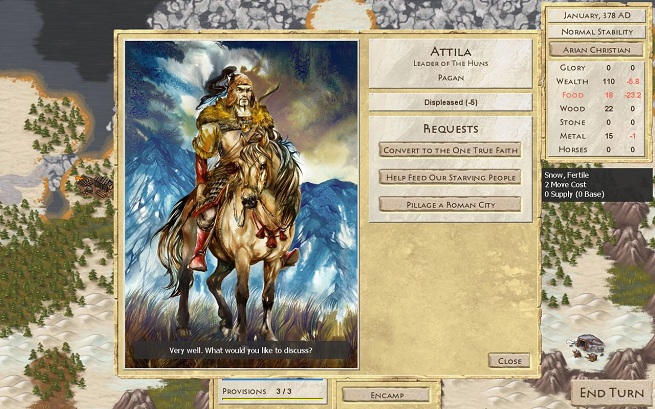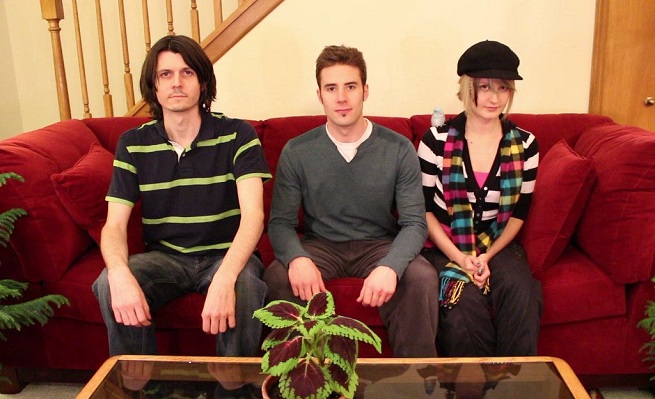 Making friends
Making friends
Rome need not be your enemy. At the Gates has a diplomatic system. Shafer says some parts are pretty traditional: A relations rating measures whether Rome or a tribe likes or dislikes you. You improve relations with fulfilling requests, such as delivering food to another tribe when you have more than enough to see you through the winter. “It’s like how giving a homeless person a meal would be happier than finding a random person while shopping and giving them food. The idea is that what you do really matters. There is this situational aspect that when you do something at the right time — what another needs right now — is more important than handing stuff out randomly.”
Since the Dark Ages aren’t exactly known for advances in technology, At the Gates lacks the standard tech tree found in strategy games. But Shafer wanted something to fill that hole, so you can gain perks on a “Romanization” tree. As you become more Romanized, you gain perks that act like technology — building ships or siege weapons or upgrading farms. “I feel it’s going to be more interesting than watching a science box fill up,” Shafer said. “Everything should be meaningful, important. You won’t be hitting ‘end turn’ for 10 or 15 times in a row to get to the good part.”

The name game
Shafer and his teammates (above) founded their studio in Detroit, which is slowly becoming a fertile ground for startups and tech companies. They bought a house in a green patch full of trees in the Detroit metro area. “It’s got some woodlands and stuff,” Shafer said. “And a lot of pets. Including a parrot. Kaye [the team’s artist] has a domestic Siberian fox and a sugar glider. And we wanted a name that fit with that.
“Everybody tries to come up with a name of their company that fits their values. We wanted a name that’s short and snappy, easy to remember, easy to spell. At the two previous companies I worked at, Firaxis and Stardock, everybody I’d tell about my work would say 1) ‘What?’ and 2) ‘How do you spell that?’ I would rather get the question ‘Where’d you get that name from’ than ‘What!’”
Money matters
Conifer has been working on At the Gates for several months and already has a fully playable prototype. Shafer said he and his teammates have funded the game with their own money (technically, he’s the studio’s only full-time employee. The others have day jobs).
So, where’s the money coming from? From you. Conifer is taking At the Gates to Kickstarter, setting a $40,000 goal. “Obviously, that’s not a lot for an in-depth strategy game. The reason this is possible is that we have so much progress already. We have to do more iteration, more A.I., lots of miscellaneous things. Hotseat support. Smaller things you don’t think about that, if not there, people say you really didn’t do a good job for this thing.”
The Kickstarter goes live today, and the $40,000 is the minimum Shafer says he needs to finish At the Gates.
Kickstarter is important to indie development, Shafer says, because many games that appear on it just wouldn’t receive funding from a traditional publisher — “A 2D Fall of Rome? No one would do it,” Shafer said. But what is truly the key for developers of strategy games is digital distribution. “If I had to print CDs and manuals and ship stuff and have meetings with Best Buy and Walmart … a lot of big-box retailers wouldn’t be interested,” Shafer said. “Between these two [Kickstarter and direct download], we can get it made and get it to the people. In the past, being a small indie company was challenging and risky.
“Now, all you have to do is make a good game — a challenge that’s more up my alley than getting a game on store shelves.”
Image source: Conifer Games
VentureBeat's mission is to be a digital town square for technical decision-makers to gain knowledge about transformative enterprise technology and transact. Learn More
